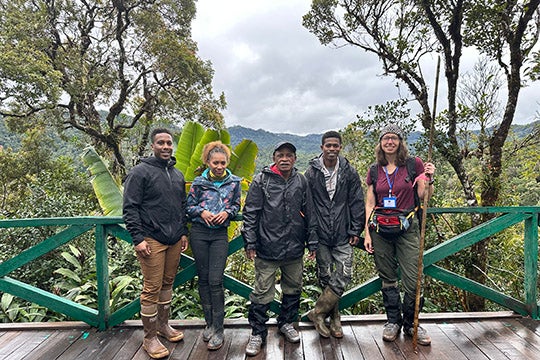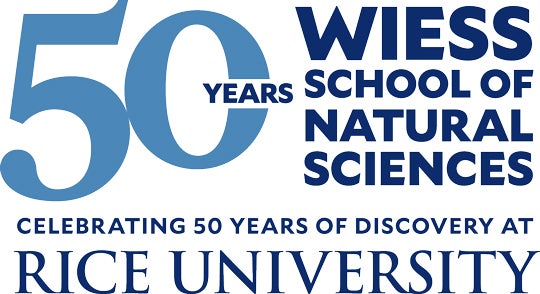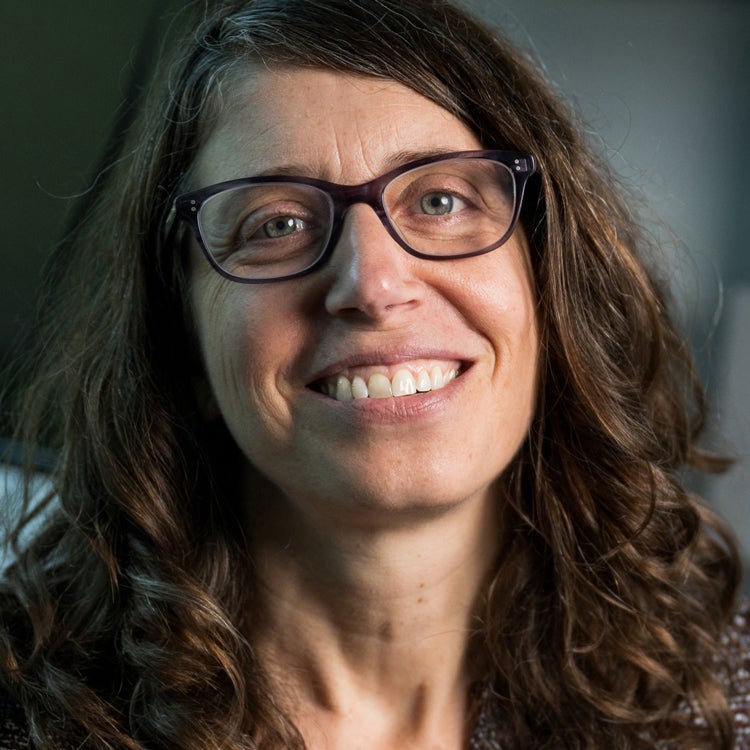
Amy Dunham is just as fascinated by the biodiversity of Madagascar today as she was during her first visit to the island as an undergraduate more than 20 years ago.
That stands to reason since she’s an evolutionary biologist and ecologist, and many of Madagascar’s plants and animals are found nowhere else, having evolved there in isolation for millions of years.
“It’s kind of a dream to work there,” said Dunham, an assistant professor of biosciences who studies the intricate interactions between species in Malagasy forests. Those species-to-species interactions are themselves a product of evolution, and Dunham likened them to threads in a complex tapestry.
“Those relationships are like invisible threads that hold ecosystems together and make them function,” she said. “My group is interested in understanding what happens when those threads are added, removed or reconnected through processes like extinction, invasion and forest restoration.”
Dunham’s research began with lemurs. Madagascar is home to more than 100 lemur species. Almost all eat fruit, and about 25% are frugivores that eat little but fruit. Lemurs are sometimes called the “gardeners of Madagascar” because they disperse fruit seeds throughout the forest in their scat. Over years of study, Dunham’s group has quantified how this mutually beneficial arrangement pays off for specific tree species and for the forests as a whole. They found that lemur seed-dispersal plays a significant role in structuring forests; demonstrated how the loss of lemurs, almost all of which are endangered, is already affecting Madagascar’s forests; and quantified how much less carbon dioxide Madgascar’s forests will be able to draw from the atmosphere if lemurs go extinct.

Dunham’s biodiversity expertise extends beyond Madagascar. She was a member of the United Nations Intergovernmental Panel on Biodiversity and Ecosystems Services, and was tapped as one of the lead authors of the Africa assessment in the panel’s landmark global assessment of biodiversity in 2018.

But she’s still drawn to Madagascar, and visits at least once per year. Her research there has expanded significantly beyond the study of lemurs. Her group recently began a collaborative project with Biosciences’ Matt McCary to explore how a problematic invasive plant called strawberry guava is impacting native insects and soil microbes. Another ongoing study is focused on mistletoe. Dunham said the plant parasite plays a far more nuanced role in shaping forest biodiversity than most people realize.
“They connect a variety of interaction networks and can have really complex impacts,” she said. “They can attract frugivores and pollinators, for example, and they can suppress the dominant tree species and allow more species of trees to co-exist.”

In all of her research, Dunham said there’s an emphasis on understanding “how interactions among species shape the structure and function of ecosystems,” and how those processes are influenced by human-driven changes.
“There’s always an emphasis on understanding how those patterns might be important for things like conservation, management and restoration,” she said. “Bridging the gap between discovery and real-world challenges is an important goal.”

